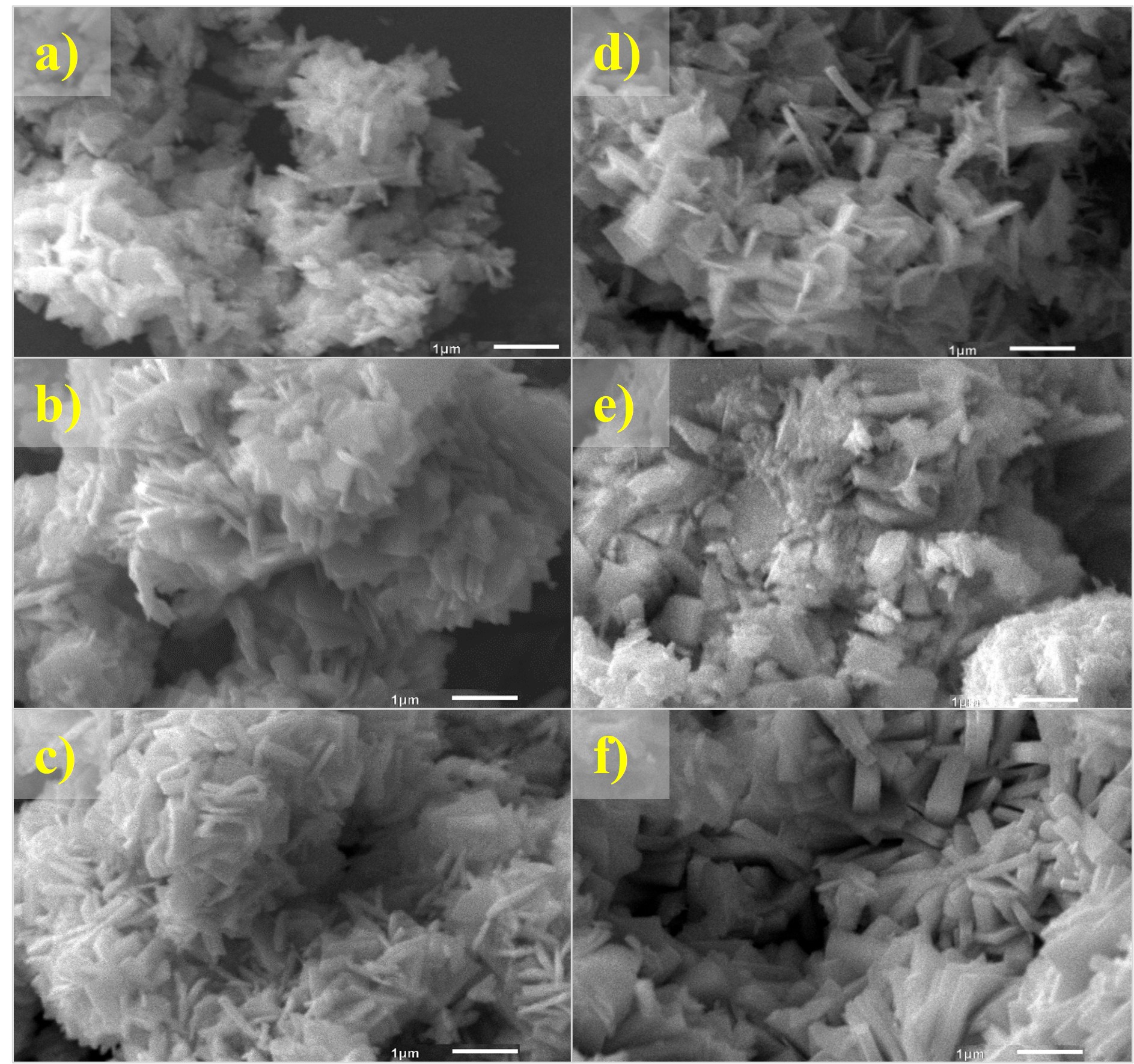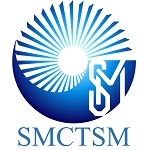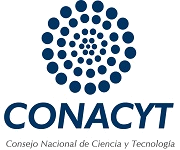Structural and optical characterization of WO3 and WO3/rGO nanocomposites synthesized by a simple chemical method
DOI:
https://doi.org/10.47566/2025_syv38_1-250301Keywords:
Reflux, Tungsten oxide, Graphene oxide, Nanocomposites, Crystalline structureAbstract
The chemical structure and morphology of inorganic metal oxides have attracted increasing interest because of these parameters directly influence their sensing properties. Additionally, the incorporation of reduced graphene oxide (rGO) favors an increase in the sensitivity of these composites. Tungsten oxide (WO3) and tungsten oxide/reduced graphene oxide (rGO) nanocomposites with 3 w% (WO3/rGO) were prepared via reflux method. X-ray Diffraction (XRD), Raman Spectroscopy and Scanning Electron Microscopy (SEM) techniques were used to study the crystalline structure and morphology properties of the prepared WO3 and WO3/rGO nanocomposites. The diffraction pattern of WO3 shows the diffraction peaks of tungsten trioxide hydrate (WO3(H2O), tungstite) with orthorhombic structure; however, with the annealing at 500 °C occur a phase transformation to the monoclinic structure. The incorporation of rGO into the WO3 matrix did not modify its monoclinic chemical structure. The crystallite size of the reduced composites increases as the percentage of rGO increases. Furthermore, the optical properties of WO3/rGO nanocomposites were characterized by Ultraviolet-Visible Diffuse Reflectance Spectroscopy (UV-Vis DRS). The band gap of WO3/rGO composites varies between 3.32 and 3.35 eV. SEM images of WO3 show structures of nanoplates with rectangular transversal section.
References
. C.C. Mardare, A.W. Hassel, “Review on the Versatility of Tungsten Oxide Coatings” Phys. Status Solidi A 216, 1900047 (2019).
https://doi.org/10.1002/pssa.201900047
. M.V. Santhosh, K.S. Devaky, M.K. Jayaraj, “Hydrothermal synthesis of WO3 nanoparticles: Characterization and sonocatalytic study” Mater. Today: Proc. 25, 183 (2020).
https://doi.org/10.1016/j.matpr.2019.12.418
. M. Jamali, F.S. Tehrani, “Effect of synthesis route on the structural and morphological properties of WO3 nanostructures” Mater. Sci. Semicond. Process. 107, 104829 (2020).
https://doi.org/10.1016/j.mssp.2019.104829
. J.D. Muñoz-Bolaños, J.E. Rodríguez-Páez, “WO3 mono-nanocrystals: Synthesis, characterization and evaluation of their electrical behavior in oxygen and acetone atmospheres” Mater. Sci. Eng. B 274, 115472 (2021).
https://doi.org/10.1016/j.mseb.2021.115472
. A. Markhabayeva, “Synthesis of hierarchical WO3 microspheres for photoelectrochemical water splitting application” Physical Sciences and Technology 10, 33 (2023).
https://doi.org/10.26577/phst.2023.v10.i2.04
. M.T. Goodarzi, M. Ranjbar, “Atmospheric flame vapor deposition of WO3 thin films for hydrogen detection with enhanced sensing characteristics” Ceram Int. 46, 21248 (2020).
https://doi.org/10.1016/j.ceramint.2020.05.215
. L. Ghasemi, H. Jafari, A. Jafari, “Optimizing experimental conditions in synthesizing WO3 nanopowders through sol-gel method using Taguchi design” J. Aust. Ceram. Soc. 54, 483 (2018).
https://doi.org/10.1007/s41779-018-0177-4
. K. Mouratis, I.V. Tudose, C. Romanitan, C. Pachiu, M. Popescu, G. Simistiras, S. Couris, M.P. Suchea, E. Koudoumas, “WO3 Films Grown by Spray Pyrolysis for Smart Windows Applications” Coatings 12, 545 (2022).
https://doi.org/10.3390/coatings12040545
. W.L. Kwong, N. Savvides, C.C. Sorrell, “Electrodeposited nanostructured WO 3 thin films for photoelectrochemical applications” Electrochim. Acta 75, 371 (2012).
https://doi.org/10.1016/j.electacta.2012.05.019
. N. Bashirom, Q.L. Lee, “Synthesis of visible-light active monoclinic WO3 by thermal oxidation of tungsten powder for photoreduction of Cr(VI)” Mater. Sci. Forum 1010, 405 (2020).
https://doi.org/10.4028/www.scientific.net/MSF.1010.405
. M. Verma, K.P. Singh, A. Kumar, “Reactive magnetron sputtering based synthesis of WO3 nanoparticles and their use for the photocatalytic degradation of dyes” Solid State Sci. 99, 105847 (2020).
https://doi.org/10.1016/j.solidstatesciences.2019.02.008
. S.K. Aditha, A.D. Kurdekar, L.A.A. Chunduri, S. Patnaik, V. Kamisetti, “Aqueous based reflux method for green synthesis of nanostructures: Application in CZTS synthesis,” MethodsX 3, 35 (2016).
https://doi.org/10.1016/j.mex.2015.12.003
. H.S. Nguyen, T.L.A. Luu, H.T. Bui, T.T. Nguyen, H.L. Nguyen, T.S. Nguyen, C.T. Nguyen, “Nanocomposites of refluxed CNTs and novel hexagonal h’-WO3 nanoflakes: in situ synthesis, physical properties, and organic dye removal activities” SPMS Conf. Proc. 2021, 386 (2022).
https://www.researchgate.net/publication/364314674
. C. Lee, X. Wei, J.W. Kysar, J. Hone, “Measurement of the elastic properties and intrinsic strength of monolayer graphene” Science 321, 385 (2008).
https://doi.org/10.1126/science.1157996
. A. Peigney, Ch. Laurent, E. Flahaut, R.R. Bacsa, A. Rousset, “Specific surface area of carbon nanotubes and bundles of carbon nanotubes” Carbon 39, 507 (2001).
https://doi.org/10.1016/S0008-6223(00)00155-X
. A.A. Balandin, S. Ghosh, W. Bao, I. Calizo, D. Teweldebrhan, F. Miao, C.N. Lau, “Superior thermal conductivity of single-layer graphene,” Nano Lett. 8, 902 (2008).
https://doi.org/10.1021/nl0731872
. A.K. Geim, K.S. Novoselov, “The rise of graphene” Nature Mater. 6, 183 (2007).
https://doi.org/10.1038/nmat1849
. K.S. Novoselov, A.K. Geim, S.V. Morozov, D. Jiang, Y. Zhang, S.V. Dubonos, I.V. Grigorieva, A.A. Firsov, “Electric Field Effect in Atomically Thin Carbon Films” Science 306, 666 (2004).
https://doi.org/10.1126/science.1102896
. S.J. Malode, K. Prabhu, S.S. Kalanur, N. Meghani, N.P. Shetti, “WO3/rGO nanocomposite-based sensor for the detection and degradation of 4-Chlorophenol” Chemosphere 312, 137302 (2023).
https://doi.org/10.1016/j.chemosphere.2022.137302
. S.J. Malode, K. Prabhu, B.G. Pollet, S.S. Kalanur, N.P. Shetti, “Preparation and performance of WO3/rGO modified carbon sensor for enhanced electrochemical detection of triclosan” Electrochim. Acta 429, 141010 (2022).
https://doi.org/10.1016/j.electacta.2022.141010
. G. Jeevitha, R. Abhinayaa, D. Mangalaraj, N. Ponpandian, P. Meena, V. Mounasamy, S. Madanagurusamy, “Porous reduced graphene oxide (rGO)/WO3 nanocomposites for the enhanced detection of NH3 at room temperature,” Nanoscale Adv. 1, 1799 (2019).
https://doi.org/10.1039/c9na00048h
. A. Eftekhari, H. Garcia, “The necessity of structural irregularities for the chemical applications of graphene” Mater. Today Chem. 4, 1 (2017).
https://doi.org/10.1016/j.mtchem.2017.02.003
. S. Rao, J. Upadhyay, K. Polychronopoulou, R. Umer, R. Das, “Reduced graphene oxide: Effect of reduction on electrical conductivity” J. Compos. Sci. 2, 25 (2018).
https://doi.org/10.3390/jcs2020025
. H. Hajishafiee, P. Sangpour, N.S. Tabrizi, “Facile Synthesis and Photocatalytic Performance of WO3/rGO Nanocomposite for Degradation of 1-Naphthol” Nano 10, 1550072 (2015).
https://doi.org/10.1142/S1793292015500721
. J. Guerrero-Contreras, F. Caballero-Briones, “Graphene oxide powders with different oxidation degree, prepared by synthesis variations of the Hummers method” Mater. Chem. Phys. 153, 209 (2015).
https://doi.org/10.1016/j.matchemphys.2015.01.005
. M. Ahmadi, S. Sahoo, R. Younesi, A.P.S. Gaur, R.S. Katiyar, M.J-F Guinel, "WO3 nano-ribbons: their phase transformation from tungstite (WO3·H2O) to tungsten oxide (WO3)" J. Mater. Sci. 49, 5899 (2014).
https://doi.org/10.1007/s10853-014-8304-2
. J. Jayachandiran, M. Arivanandhan, O. Padmaraj, R. Jayavel, D. Nedumaran, “Investigation on ozone-sensing characteristics of surface sensitive hybrid rGO/WO3 nanocomposite films at ambient temperature” Adv. Compos. Hybrid Mater. 3, 16 (2020).
https://doi.org/10.1007/s42114-020-00134-8
. Y. Waseda, E. Matsubara, K. Shinoda, “X-Ray Diffraction Crystallography” (Springer, Berlin, 2011).
https://doi.org/10.1007/978-3-642-16635-8
. S. Bhattacharjee, S. Sen, S. Samanta, S. Kundu, “Study on the role of rGO in enhancing the electrochromic performance of WO3 film” Electrochim. Acta 427, 140820 (2022).
https://doi.org/10.1016/j.electacta.2022.140820
. E.S. Ameh, “A review of basic crystallography and x-ray diffraction applications” Int. J. Adv. Manuf. Technol. 105, 3289 (2019).
https://doi.org/10.1007/s00170-019-04508-1
. S. Bandi, A.K. Srivastav, “Review: Oxygen-deficient tungsten oxides” J. Mater. Sci. 56, 6615, (2021).
https://doi.org/10.1007/s10853-020-05757-2
. M. Zhi, W. Huang, Q. Shi, M. Wang, Q. Wang, “Sol-gel fabrication of WO3/RGO nanocomposite film with enhanced electrochromic performance” RSC Adv. 6, 67488 (2016).
https://doi.org/10.1039/c6ra13947g
. G.M. Hingangavkar, S.A. Kadam, Y.R. Ma, S.D. Sartale, R.N. Mulik, V.B. Patil, “Intercalation of two-dimensional graphene oxide in WO3 nanoflowers for NO2 sensing,” Nano-Struct. Nano-Objects 34, 100964 (2023).
https://doi.org/10.1016/j.nanoso.2023.100964
. E. Cazzanelli, C. Vinegoni, G. Mariotto, A. Kuzmin, J. Purans, “Raman study of the phase transitions sequence in pure WO at 3 high temperature and in H WO with variable hydrogen content,” Solid State Ion. 123, 67 (1999).
https://doi.org/10.1016/S0167-2738(99)00101-0
. M. Boulova, N. Rosman, P. Bouvier, G. Lucazeau, “High-pressure Raman study of microcrystalline WO3 tungsten oxide” J. Phys.: Condens. Matter 14, 5849 (2002).
https://doi.org/ 10.1088/0953-8984/14/23/314
. L. Zhou, Q. Ren, X. Zhou, J. Tang, Z. Chen, C. Yu, “Comprehensive understanding on the formation of highly ordered mesoporous tungsten oxides by X-ray diffraction and Raman spectroscopy” Micropor. Mesopor. Mat. 109, 248 (2008).
https://doi.org/10.1016/j.micromeso.2007.04.054
. A.G. Souza-Filho, V.N. Freire, J.M. Sasaki, J. Mendes Filho, J.F. Julião, U.U. Gomes, “Coexistence of triclinic and monoclinic phases in WO3 ceramics” J. Raman Spectrosc. 31, 451 (2000).
https://doi.org/10.1002/1097-4555(200006)31:6<451::AID-JRS528>3.0.CO;2-K
. C. Santato, M. Odziemkowski, M. Ulmann, J. Augustynski, “Crystallographically oriented mesoporous WO3 films: Synthesis, characterization, and applications,” J. Am. Chem. Soc. 123, 10639 (2001).
https://doi.org/10.1021/ja011315x
. J. Kaur, K. Anand, K. Anand, R.C. Singh, “WO3 nanolamellae/reduced graphene oxide nanocomposites for highly sensitive and selective acetone sensing” J Mater Sci. 53, 12894 (2018).
https://doi.org/10.1007/s10853-018-2558-z
. K. Ramesh, B. Gnanavel, “Fabrication and characterization of RGO/WO3nanocomposites based working electrode for dye-sensitized solar cells (DSSCs)” Mater. Today Proc. 47, 1967 (2021).
https://doi.org/10.1016/j.matpr.2021.04.023
. J. Xiao, C. Song, W. Dong, C. Li, Y. Yin, “Synthesis, Characterization, and Gas Sensing Properties of WO3 Nanoplates” Rare Metal Mat. Eng. 46, 1241 (2017).
https://doi.org/10.1016/s1875-5372(17)30144-3
. A.K. Carranza Díaz, “Espectroscopía de reflectancia difusa - NIR para la determinación del contenido de agua en el suelo”, Master’s Thesis (Universidad Nacional de Colombia, 2019).
https://repositorio.unal.edu.co/handle/77517
. R. López, R. Gómez, “Band-gap energy estimation from diffuse reflectance measurements on sol-gel and commercial TiO2: A comparative study” J. Sol-gel Sci. Techn. 61, 1 (2012).
https://doi.org/10.1007/s10971-011-2582-9
. M. Shur, “Wide band gap semiconductor technology: State-of-the-art” Solid-State Electron. 155, 65 (2019).
https://doi.org/10.1016/j.sse.2019.03.020
. B. Parasuraman, S. Chinnapaiyan, B. Kandasamy, P. Shanmugam, A.A. Alothman, P. Thangavelu, C.-H. Huang “Fabrication of dual-functional smart materials: 2D-WO3/rGO nanocomposite for electrochemical detection and photocatalytic degradation of tetracycline” Sens. Actuators A: Phys. 379, 115873 (2024).
https://doi.org/10.1016/j.sna.2024.115873
. C. Fu, C. Foo, P.S. Lee, “One-step facile electrochemical preparation of WO3/graphene nanocomposites with improved electrochromic properties” Electrochim. Acta 117, 139 (2014).

Downloads
Published
Issue
Section
License
Copyright (c) 2025 The authors; licensee SMCTSM, Mexico.

This work is licensed under a Creative Commons Attribution 4.0 International License.
©2025 by the authors; licensee SMCTSM, Mexico. This article is an open access article distributed under the terms and conditions of the Creative Commons Attribution license (http://creativecommons.org/licenses/by/4.0/).





